Traditional media: the story
Mass media are born when the first important human aggregations begin to occur. We talk about the cities, which were formed in the first half of the nineteenth century, when people moved from the countryside to towns with the aim of finding work. So, we talk about the formation of "masses". In that context, newspapers are spread, paid at low prices and source of information for people. Many could not read well, so to deal with reading aloud was one person.
At the beginning of the twentieth century, then, it comes to the birth of radio. It was used for communications in war and it was feared that it was intercepted. Only after the experience of the Titanic and its S.O.S. spread by the radio operator on multiple radios was its potential understood. A potential that would change things. So, radio was seen as a means of sending a message from one point to many. It became a mass media, and the term "broadcast" was coined.
Finally, there is talk of television. This had various "false starts". It had the opportunity to be born and develop only after the Second World War. In Italy, in particular, he came late compared to the rest of Europe.
The newspaper, radio and TV are the three great traditional media. They have gone through almost two centuries. They have changed shape, but they are still present. Their main characteristic is, in fact, to communicate from a single point to many. From a single issuer to many receivers. In addition, often this communication does not allow an answer. From here you can see the difference between traditional media and mainstream new media.
The theory of the hypodermic needle
It is a theory, developed in the 1940s. It argues that large media act on masses of inert people. These masses, according to theory, passively receive all the information and messages conveyed by the big media, without being able to do anything to process them. It is therefore not considered the individual in itself, it does not take into account the singularity of each person, but it flattens everything on the idea of a large group of subjects all equal to each other. All unable to react and respond.
The hypodermic needle theory is also known as the "bullet theory". This in reference to the message that directly affects the subjects, without them being able to do anything about it. Of course, the theory is profoundly wrong, but we can only know today, in retrospect.

New media
New media is digital media. Their birth dates back to the late twentieth century, when they began experimenting with the first forms of digital and came the web. New media does not have one-to-one, one-to-many, but many-to-many communication. They allow people not only to be passive users, but also active and involved.
On the internet, everyone can comment, say what they want. With radio, TV and newspapers, you could interact from time to time by telephoning or sending a letter, but not much more. On the web, the voice is given to anyone. This has both positive and negative sides.
The web was founded in 1991. Tim Berners-Lee is considered its founder. In 1993, the world wide web became public. In fact, the source code is provided. This way, anyone was able to create web pages. The early web consisted of forums, virtual "places" where people asked for information and received it from other users. This led to the creation of an ever wider community of active users able to interact with each other, to exchange questions and answers, but also opinions, ideas and messages.
What is the difference between traditional and new media: analog and digital
By definition, "analog" represents a signal that is reproduced in an analog way, therefore equal, continuous. We talk, potentially, of infinite numerical values. Think, for example, of vinyl. Music is engraved in the groove in a continuous way.
When we talk about digital, however, we talk about a discontinuous reproduction. The messages are converted into a series of digits, the binary code, and transferred to the desired device. This reconverts and transmits them. Think, for example, of digital music, which turns into binary code and turns back into sounds when you listen to it on your phone.
Thanks to digital, therefore to the use of binary code, the devices have become smaller and faster and faster. Computers got thinner, the phone was born and it got smaller, and so on. And not only that. In fact, digitalization has allowed convergence.
What is it? Convergence is that phenomenon where devices are more and more similar to each other, reaching the limit. Think about the phone: it is a laptop, but it also contains the radio, the newspaper, the cinema. The tablet is both phone, computer, cinema, and so on.
The potential of New Media
Having everything at your fingertips allows users to be much more active than they have ever been. Not only do they interact with each other, but they also create content. Think about social media: they are based exactly on this principle. Users can express preferences, tell of themselves and interact as never before. This represents a huge potential for companies.
They can understand what interests their users, they can interact with them, but they can also create content that is tailored to them. It is true, it is much more difficult to attract the attention of customers in this chaos of continuous stimuli, but it is also much easier to know your target. We are no longer in front of what was believed to be a helpless mass, but we are in front of different individuals.
For this, to produce content suitable for the appropriate audience, it is good to rely on a social media marketing agency. Ekeria assists you throughout the process, from defining your company’s online identity to creating content. Request a free consultation!
.webp)


